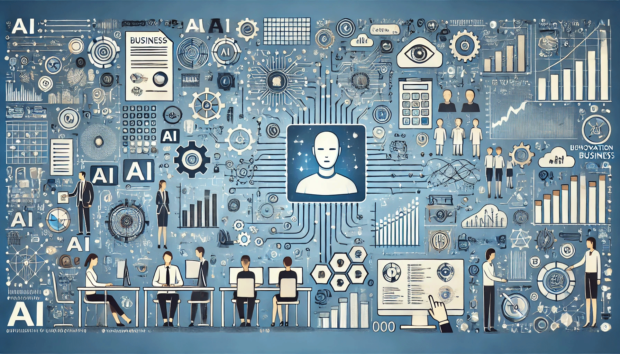With the rapid development of artificial intelligence (AI) technologies and the emergence of powerful language models like ChatGPT, new opportunities are opening up for companies. However, to fully capitalize on these opportunities, businesses need a deliberate approach to adapting their processes. How can companies begin integrating AI right now? Let’s explore the key steps that will help businesses successfully incorporate these new technologies into their operations.
1. Analyzing Business Processes and Identifying Points for Implementation
The first and most crucial step is to analyze existing business processes and identify where AI can add the most value. This may involve:
- Task Augmentation: Some processes can be enhanced immediately by leveraging AI. For example, automating routine operations or analyzing data to make more informed decisions.
- Automation and Development: Determine which tasks can be fully automated through AI. Large companies might develop their own solutions, while small and medium-sized enterprises can focus on finding ready-made tools on the market.
- Choosing Ready-Made Solutions: AI can, for instance, automate HR processes like resume screening or interview scheduling, reducing the time spent on routine tasks.
2. Organizing and Managing Data
To use AI effectively, it’s crucial to structure and organize data properly. Even the most advanced models need clean, structured data to deliver high-quality results. Companies should:
- Centralize Information: Data is often scattered across various systems and formats. Consolidating all knowledge and data in one place makes it more accessible and useful for analysis.
- Data Preparation: Processes that ensure data is kept up-to-date and well-organized should be embedded into the company’s daily practices. This allows AI models to work with the most current information and produce more accurate results.
3. Establishing Data Update Processes
It’s equally important to set up processes that ensure data is continuously updated and remains relevant. This is a complex but necessary task for successful AI utilization. Employees must understand that updating data is not a one-time effort but a continuous process that maintains the effectiveness of AI tools.
4. Assessing the Quality of AI Models
To gauge how well AI handles tasks, it’s helpful to create benchmarks—a set of tasks against which the quality of model outputs can be measured. This helps identify weak points in current solutions and understand which tasks the model excels at. Such an approach allows for the most effective use of AI and helps avoid unnecessary costs.
5. Employee Training and Awareness
Successful AI integration requires that employees understand how and where to use these technologies. Companies should:
- Increase Awareness: Educate employees on what tasks can be delegated to AI, what risks exist, and how to mitigate them.
- Provide Access to Tools: For example, provide access to software tools like Copilot for developers, which significantly accelerates workflows.
Conclusion
Integrating AI into a business is not an instantaneous process but a long-term strategy. For large companies, implementation might take several years, but small steps can be taken right now—from data analysis to increasing employee awareness. Small and medium-sized businesses can adapt more quickly due to their flexibility and the availability of ready-made solutions on the market.
In a world where AI is becoming an integral part of business, it’s crucial not only to keep pace with technological advancements but also to leverage them to improve efficiency and competitiveness. Start small but do so thoughtfully, and success will not be far behind.

Leave a Reply
You must be logged in to post a comment.